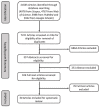Wearable Monitoring Devices for Biomechanical Risk Assessment at Work: Current Status and Future Challenges-A Systematic Review
- PMID: 30217079
- PMCID: PMC6163390
- DOI: 10.3390/ijerph15092001
Wearable Monitoring Devices for Biomechanical Risk Assessment at Work: Current Status and Future Challenges-A Systematic Review
Erratum in
-
Erratum: Alberto, R. et al., Wearable Monitoring Devices for Biomechanical Risk Assessment at Work: Current Status and Future Challenges-A Systematic Review. Int. J. Environ. Res. Public Health 2018, 15, 2001.Int J Environ Res Public Health. 2018 Nov 16;15(11):2569. doi: 10.3390/ijerph15112569. Int J Environ Res Public Health. 2018. PMID: 30453581 Free PMC article.
Abstract
Background: In order to reduce the risk of work-related musculoskeletal disorders (WMSDs) several methods have been developed, accepted by the international literature and used in the workplace. The purpose of this systematic review was to describe recent implementations of wearable sensors for quantitative instrumental-based biomechanical risk assessments in prevention of WMSDs. Methods: Articles written until 7 May 2018 were selected from PubMed, Scopus, Google Scholar and Web of Science using specific keywords. Results: Instrumental approaches based on inertial measurement units and sEMG sensors have been used for direct evaluations to classify lifting tasks into low and high risk categories. Wearable sensors have also been used for direct instrumental evaluations in handling of low loads at high frequency activities by using the local myoelectric manifestation of muscle fatigue estimation. In the field of the rating of standard methods, on-body wireless sensors network-based approaches for real-time ergonomic assessment in industrial manufacturing have been proposed. Conclusions: Few studies foresee the use of wearable technologies for biomechanical risk assessment although the requirement to obtain increasingly quantitative evaluations, the recent miniaturization process and the need to follow a constantly evolving manual handling scenario is prompting their use.
Keywords: IMUs; grip force sensors; hand-held dynamometers; instrumental-based biomechanical risk assessment; sEMG; standardized biomechanical risk assessment methods; wearable sensors.
Conflict of interest statement
The authors declare no conflict of interest.
Figures


References
-
- Peppoloni L., Filippeschi A., Ruffaldi E., Avizzano C.A. (WMSDs issue) A novel wearable system for the online assessment of risk for biomechanical load in repetitive efforts. Int. J. Ind. Ergon. 2016;52:1–11. doi: 10.1016/j.ergon.2015.07.002. - DOI
-
- Takala E.P., Pehkonen I., Forsman M., Hansson G.A., Mathiassen S.E., Neumann W.P., Sjøgaard G., Veiersted K.B., Westgaard R.H., Winkel J. Systematic Evaluation of Observational Methods Assessing Biomechanical Exposures at Work. Scand. J. Work. Environ. Health. 2010;36:3–24. doi: 10.5271/sjweh.2876. - DOI - PubMed
-
- Vieweg H. An Introduction to Mechanical Engineering: Study on the Competitiveness of the EU Mechanical Engineering Industry. European Commission; Brussels, Belgium: 2012. Within the Framework Contract of Sectoral Competitiveness Studies [Electronic Resource]
Publication types
MeSH terms
LinkOut - more resources
Full Text Sources
Other Literature Sources
Medical

